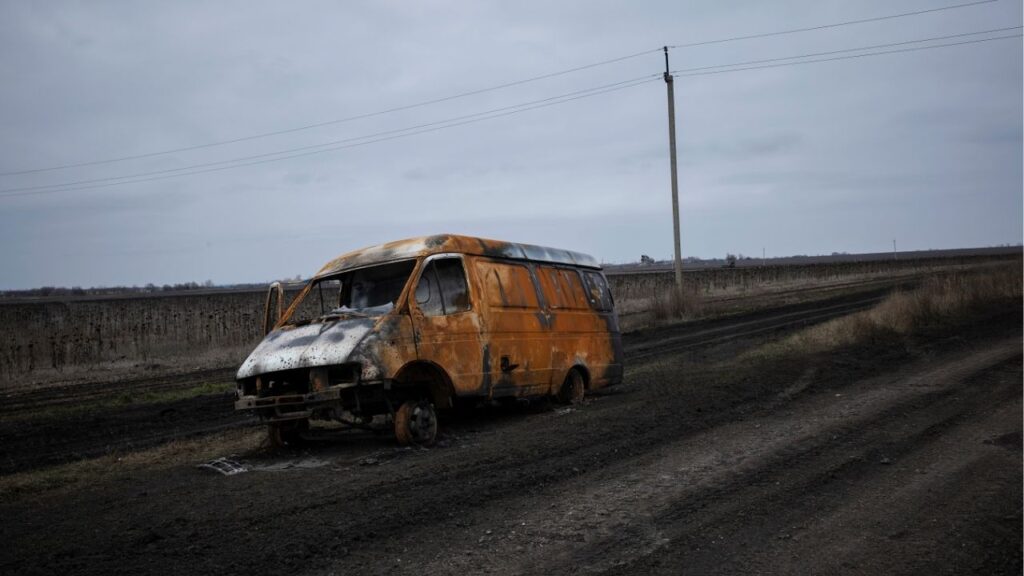Share
ESCONDIDO — Two immigration officers had been parked outside a home well before dawn when their target — a Mexican man convicted of driving under the influence in 2015 — appeared to emerge as the sun illuminated a gray sky.
As it turned out, the man they pulled over was not the one they were looking for. But he happened to be in the country illegally, too, and was taken into custody.
The arrest last week near San Diego illustrates how President Donald Trump’s pledge to deport millions of immigrants in the U.S. without legal permission would be highly impractical to carry out, maybe impossible. For U.S. Immigration and Customs Enforcement, picking up people is a time-consuming, labor-intensive and not-always-successful task.
An arrest of just one immigrant often requires days of surveillance.
At the same time, ICE has a limited budget and a shortage of detention space. Also, more and more law enforcement agencies, especially those in big cities, are refusing to help ICE as part of the growing “sanctuary” movement, slowing down the arrests of immigrants even more.
ICE tactics are in the spotlight amid warnings from the Trump administration that it would begin a sweep Sunday in 10 cities against families who are in the country illegally and have been ordered to leave.
Estimated 11 Million in U.S. Illegally
In the recent San Diego operation, officers made 20 arrests over five days. They wore bulletproof vests emblazoned “ICE” on the back and used several unmarked SUVs, immediately ordering those in custody to turn off their phones to prevent family and friends from tracking their movements.
Gregory Archambeault, ICE director of field operations in San Diego, said staking out targets can be like watching paint dry.
“Today it happened pretty quickly, but other times it can take several hours. We have to go back different days,” Archambeault said in the parking lot of a bus and train station where immigrants waited in a bus to be processed.
An estimated 11 million people are in the U.S. illegally, including 525,000 who have deportation orders against them and are considered fugitives. Those fugitives include 2,000 people who recently came as families and are targets of the operation that was expected to begin Sunday.
ICE operations that zero in on people with criminal convictions in the U.S. result in about 30% of targets being arrested, plus an unknown number of non-targets, or “collaterals,” who are also swept up, ICE officials said. ICE operations against families have proved even less successful, capturing only about 10 percent of the targets, ICE acting Director Matthew Albence said.
ICE officers don’t have warrants that would allow them to enter homes, a fact that immigrant advocates have successfully publicized in encouraging people not to open their doors. For safety reasons, officers in San Diego have stopped “knock-and-talks” — knocking on the door and hoping someone opens up — and instead wait for targets to leave the house, Archambeault said.
“You just don’t know what’s going on, who’s behind that door,” he said.
Families Typically Held for a Week or Two
It is far less costly and more effective for ICE to pick up people at local jails when they are arrested for non-immigration offenses. But a spate of sanctuary laws has sharply limited local authorities’ cooperation in California and elsewhere.
Before making arrests in San Diego, ICE had to line up detention space. The agency, which made about 160,000 arrests during the fiscal year that ended Sept. 30, is housing an all-time high of about 53,000 people, largely because of an unprecedented surge of Central American families arriving at the Mexican border. Family beds are scarce, and ICE’s only family detention centers are in Pennsylvania and Teas.
Immigration authorities have used hotels to hold families while they wait to be transferred or deported. But Best Western and Marriott say they won’t work with ICE.
Central American families are typically held for a week or two while authorities arrange travel documents and a chartered or commercial flight to their homeland, Albence said. The San Diego targets were Mexican adults, who can usually be sent home by land more quickly.
The man taken into custody in Escondido was a Mexican man who happened to borrow the target’s red pickup to get to work at a landscaping company. Immigration activists decry such collateral arrests, which were sharply curtailed during President Barack Obama’s second term. Trump administration officials are unapologetic.
“It’s not the target, but it’s still a good arrest,” Archambeault said.
RELATED TOPICS:
Categories

One Gaza Girl’s Fight to Survive Extreme Hunger


















